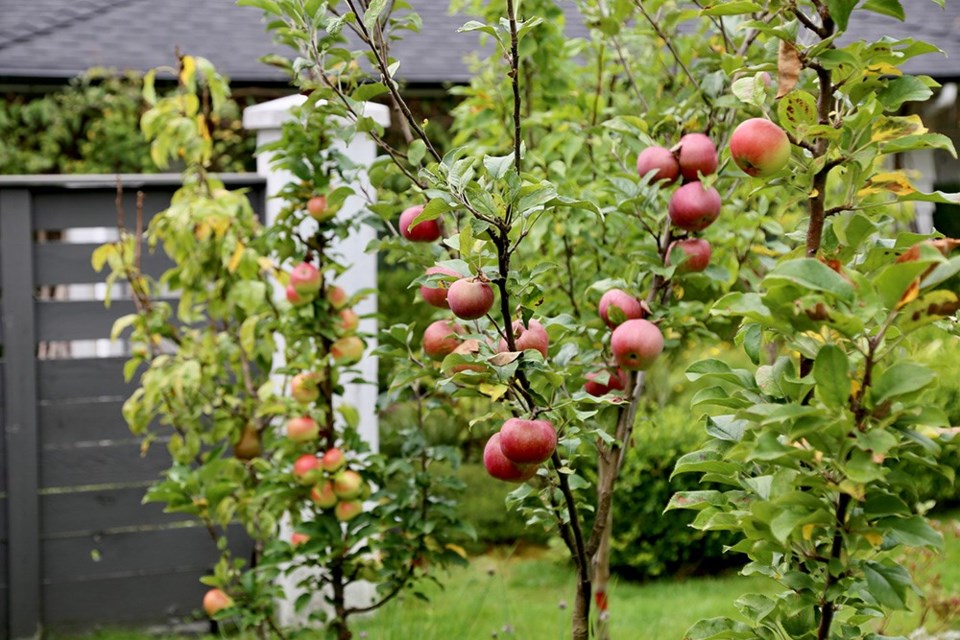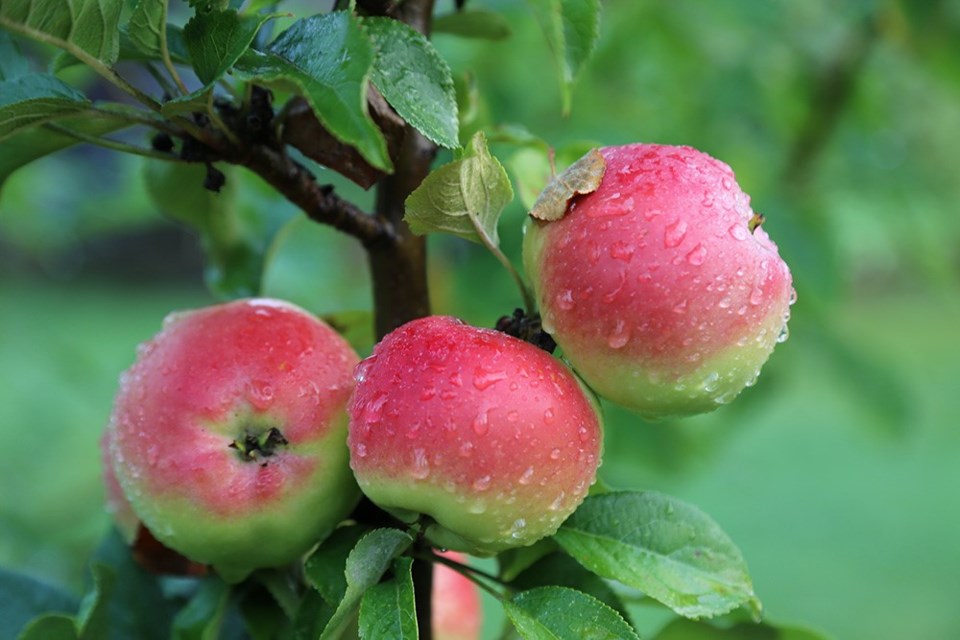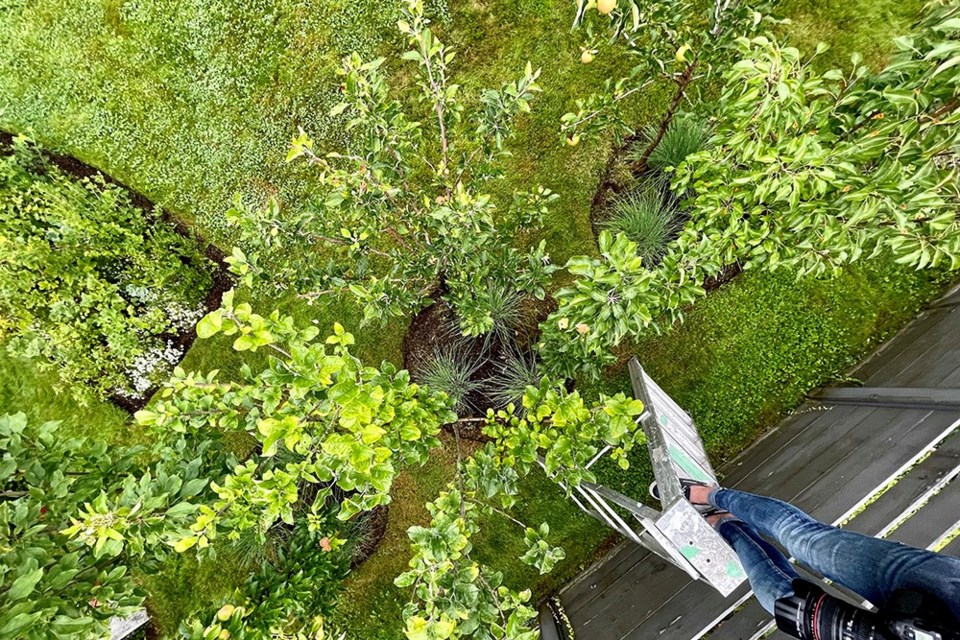These last weeks of September and early October comprise prime fruit tree planting time. The ground is warm still, rain is rife, and disturbed roots have all winter to dig in slowly and make themselves at home. So-called ‘dwarf’ fruit trees are increasingly popular and available.
For smaller urban landscapes, including patios and rooftop gardens, dwarf fruit trees are an excellent choice. I am amazed at how much full-size fruit these small trees produce in relatively little real estate. There are best-practices to adopt of course, and in true urban permaculture fashion, the best of those practices follow nature's simple logic.
We planted a tiny fruit and nut orchard of 18 trees, including two in pots, just over two years ago in our front yard, and those trees have done well in spite of major heat waves.
All 18 trees are categorized broadly as dwarf. Within that category there are many options ranging from miniature bush size trees to semi-dwarf trees that reach 3.5-4.5m in height, to the more common dwarf offering that grow no taller than 2.5-3 m. Most dwarf type trees you will find available for purchase are the latter type, whose size and shape can be further managed by pruning, and controlled siting.
Six of our trees (three Golden Sentinel apple, three Lapins cherry) are what are known as "columnar" or vertical cordon trees. Through the magic of precision pruning, these trees produce fruit vertically along and very close to the trunk, as opposed to branching dwarf trees that produce fruit horizontally along branches.
Columnar trees are the stars of small-space fruit tree farming. Imagine a picket fence made of columnar apple and cherry trees; so beautiful and productive.
We have one old and especially beautiful potted espaliered apple tree, producing Gala, Chehalis and Gravenstein apples along three sets of paired horizontal branches grafted onto a central trunk.
Espalier and cordon (columnar, but at a 45-degree angle) are two very old techniques of pruning and shaping fruit trees to grow flat against stone walls and buildings. The thermal mass of the stone collecting solar energy all day and slow-dripping it back to the fruit at night, works miracles. Urban permaculture gardeners can mimic this logic by placing potted fruit trees in front of masonry and walls of buildings, south-facing ones being optimal.
Dwarf fruit trees of all kinds are perfect for smaller space gardeners, because no matter how small the trees are, the fruit size remains standard. Dwarf fruit trees tend to produce fruit sooner than standard trees, often after just two to three years, versus three times that for standard.
Through a process of 'grafting' conventional branches (top stalk) onto specific dwarf type rootstock (below) chosen for its hardiness and growth capacity, the ultimate size of the grafted tree is minimized. The tree's growth directions and limitations are determined by the rootstock. The shape and branching are determined in large part by us.
In three guilds of three trees each, we planted six apple, two pear and one crabapple tree (for cross-pollinating the apples). The trees were arranged in a triangular pattern, with equal sides of approximately 60 cm in length.
As a rule, trees do better in thoughtfully spaced groupings than they do on their own, communicating and exchanging nutrients, information, even protection from pathogens and predator organisms and microorganisms below-ground, by way of established mycorrhizal networks. There are important bodies of published research dedicated to this complex subject. The premise makes sense, and works in my garden.
When siting the trees, we turned them to best advantage the sun and also each other, leaving as much of the "central open column" at the centre of the triangle, between the trees, clear and devoid of any branches. The column ensures sufficient sunlight and air circulation.
The trees were planted in 50/50 native soil and organic compost (to mimic composted natural leaf litter), and underplanted/mulched with beneficial perennials and herbs. All branches that crossed over each other or into the air space of that central column, were removed and used elsewhere in the garden. Keeping the trees pruned to two metres in height works for us.
Beautiful and productive. What’s not to fall in love with?
Laura Marie Neubert is a West Vancouver-based urban permaculture designer. Follow her on Instagram @upfrontandbeautiful, learn more about permaculture by visiting her Upfront & Beautiful website or email your questions to her here.
For a taste of permaculture, click on the YouTube link below:
(Video - Courtesy of West Vancouver Memorial Library)






